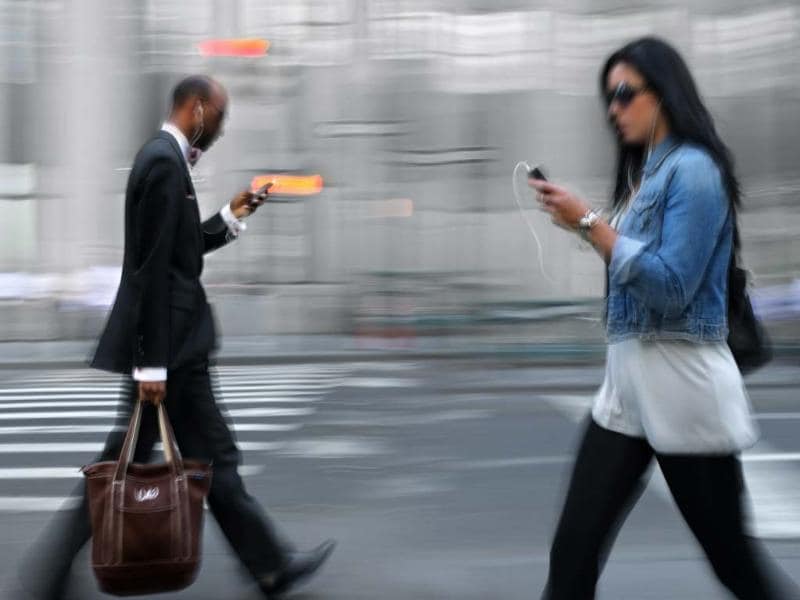System aims to prevent texting-and-walking accidents
A post-doctoral researcher at the HCI Lab of the University of Manitoba in Winnipeg, Canada is developing a system that alerts engrossed smartphone users to upcoming obstacles.

A post-doctoral researcher at the HCI Lab of the University of Manitoba in Winnipeg, Canada is developing a system that alerts engrossed smartphone users to upcoming obstacles.
Although many would be inclined to describe the issue of accidentally walking into objects both stationary and moving while texting on a smartphone as a 'First World problem,' the potential for injuries and even fatalities while distracted by a plethora of mobile devices is a growing concern.
Conceived by Juan David Hincapié-Ramos, CrashAlert is a system -- still in its early stages -- that can identify such obstacles and alert a smartphone or tablet user to take evasive action. And avoid banging into things -- much to the disappointment of other smartphone users who are always on the lookout for real-life slapstick events to film and post to YouTube.
First detailed in the MIT Technology Review, CrashAlert is more than simply an app. In order to detect obstacles and post on-screen warnings, additional hardware, in the form of a depth-sensing camera, such as that found on the Microsoft Kinect system is also required. In fact, that's how the proof of concept prototype was created, by literally strapping a Kinect to the back of a tablet. Hincapié-Ramos hopes that future generations of smartphones will adopt this depth-sensing technology in their devices. PrimeSense, the company behind the motion and depth sensing technology inside the Kinect, recently showcased something called the Capri 1.25 which is a sensor small enough to be integrated into a smartphone or tablet yet large enough to house almost all of the technology found in the Kinect.
In experiments with this Kinect/tablet hybrid, subjects tried to navigate a busy cafeteria while playing a game on the device, using only the alerts posted on the screen in order to avoid accidental collisions. Of the tests, Hincapié-Ramos says in the supporting paper he co-authored with Pourang Irani, which will be presented in full at the Chi2013 conference in Paris on May 2: 'Study results show that users took simpler corrective actions early on in their path upon noticing an obstacle, felt safer with our system and use it in unexpected ways to help navigate around the environment. This improvement came with no negative impact on performance, showing that even minimal environment information outside the user's periphery can provide for safer usage of mobiles while walking.'
Following successful early tests, Hincapié-Ramos's next step is to develop a working prototype that integrates the camera technology and perform further testing.
According to an observational study by the Harborview Injury Prevention & Research Center, University of Washington, published in December, texting while walking is hazardous for one's health -- especially when trying to cross the road. It found that while technology was not the only distraction --talking to others and dealing with pets or children also increases a pedestrian's chances of not crossing a road safely, people who were texting on their handsets took almost two seconds longer to cross an average road junction of three to four lanes than those who weren't texting at the time. What's more, they were almost four times more likely to ignore lights, to cross at the middle of the junction, or fail to look both ways before stepping off the curb.
So concerned were they by their results, the researchers called on the US legislature to reconsider laws regarding the safe use of mobile devices. As the report's authors say 'Individuals may feel they have 'safer use' than others, view commuting as 'down time,' or have compulsive behaviours around mobile device use. But the experimental evidence indicates that distractions impair awareness of surroundings. Ultimately a shift in normative attitudes about pedestrian behaviour, similar to efforts around drunk-driving, will be important to limit the...risk of mobile device use.'
Catch all the Latest Tech News, Mobile News, Laptop News, Gaming news, Wearables News , How To News, also keep up with us on Whatsapp channel,Twitter, Facebook, Google News, and Instagram. For our latest videos, subscribe to our YouTube channel.































